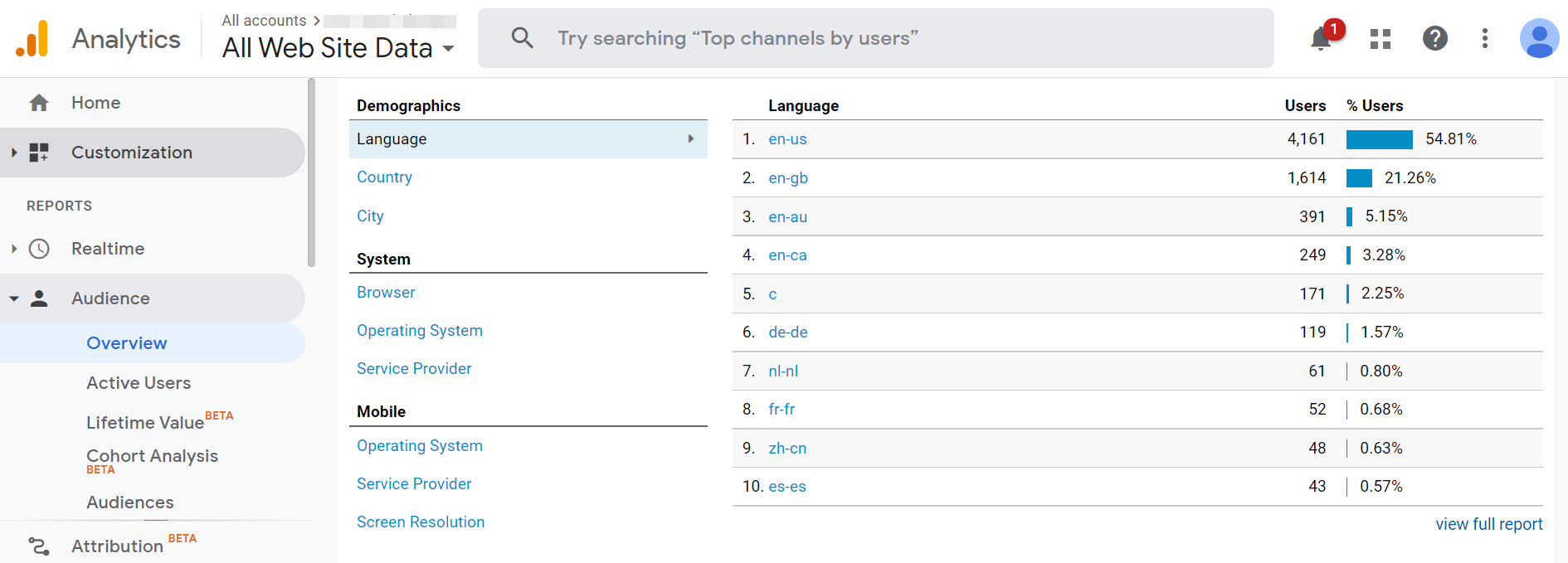Remember that even if you don’t live in the European Union, the GDPR can still apply to your website. It’s better to be safe than sorry when asking for permission to collect and use data.
? Many of your customers won’t mind sharing some of their information with you. That is, as long as they can verify its purpose and delete it if necessary.
2. Use contextual advertisements
Many third-party ad platforms will place advertisements based on user search history and behavior. The ads themselves might be irrelevant to the surrounding content.
For example, this travel blog is covered in irrelevant ads for the Semrush SEO tool. You can see the advertisements to the bottom, middle, and right of the written content:
You can’t rely on user search history to send targeted ads with cookieless marketing. However, you don’t want to display irrelevant advertisements either, as it might feel spammy or inappropriate.
Instead, consider using contextual advertisements. In this setup, you’ll display ads on pages relevant to your users.
For example, let’s say you write a post about different WordPress hosting options. Here, it would make sense to display advertisements for leading hosting providers. Ideally, they would be the same ones recommended in your content.
This advertising setup can work well because the ads will look natural in their placement. There’s also a higher likelihood that visitors will click on them. Furthermore, you can learn about your users’ interests and preferences by seeing which banners they click on and which ones they ignore.
Consider reaching out to companies in your niche and asking them to display ads on your website. You can then arrange whether they will pay you simply for showing the advertisements or based on click-throughs.
This arrangement might be less convenient than using third-party data, but it can pay off more in the long term. Your website will look more professional, and you can provide an overall better User Experience (UX).
3. Use incrementality tests
When you use cookieless tracking, you might not have enough raw information to inform your marketing strategies. In many cases, you’ll need to collect your own data to understand your visitors and their preferences.
Incrementality tests can be essential to cookieless marketing. With this testing method, you use a control group and a test group to see differences in behaviors. A/B testing is one example of this method.
For instance, you might show a new Call to Action (CTA) to a specific number of users and not others. You can then monitor visitor behavior for both groups and determine whether the CTA is effective or not. You might even use two different CTAs and compare their results.
Incrementality testing can be valuable because you can gain audience insights without relying on external data. All tests happen on your website, so you don’t need to worry about third-party cookies.
However, this testing method requires a decent amount of resources. You’ll need to gather a large amount of data to identify trends. Furthermore, you may need to dedicate some time to data analysis to get the best results.
? For this reason, we recommend using a plugin to simplify the process. Nelio AB Testing can help you run incrementality tests and analyze the information from your WordPress dashboard:
This plugin uses heatmaps and A/B testing tools to gather customer data. It can also integrate with WooCommerce to give you specific information about your online store.
4. Source data from Google Analytics
Google Analytics is a powerful platform that collects information about user behavior on your site. Furthermore, it uses only first-party cookies, enabling you to gather data without relying on third-party sources [4].
? First-party cookies can form part of your cookieless marketing strategy because they aren’t affected by online privacy initiatives, which focus on third-party data.
Furthermore, first-party cookies can help you deliver a better UX to your visitors by remembering their language preferences, previous purchases, etc. As such, they don’t fall under the “negative” banner of third-party data.
Google’s first-party cookies can give an overview of your visitor demographics, including their languages, countries, and ages, to help you pin down your target audience:

Moreover, these cookies collect a wider variety of user information, including:
- Session duration: You can see how long users spend on your website and try to increase these session times.
- Bounce rates: This data can show you if your landing pages or posts need more engaging content to keep visitors on your site.
- Conversions: This metric helps you track if your CTAs or other conversion strategies are working.
- Device and browser types: This metric can help you optimize your site for different browsers and device types, such as mobile users.
Google Analytics displays all this essential information in a single dashboard with graphs and numerical data. You can even utilize a plugin, such as MonsterInsights, to view the analytics directly from WordPress.
? We recommend tracking your analytics data regularly. That way, you can identify clear patterns and adapt your marketing strategies accordingly.
For example, you might notice that one of your landing pages has better conversion rates than others. In that scenario, you could analyze the page and apply its design to other parts of your website.
5. Use a customer engagement platform
Finally, you might consider using a customer engagement platform in your WordPress cookieless tracking strategy. This software can help you interact with your audience, improve your customer service, and develop your business.
A customer engagement platform can track all user interactions with your business. The software collects this data and enables you to view consumer trends across the board.
You can also contact customers directly from the platform and use their data to deliver personalized messages. As such, a customer engagement platform can be an essential tool for omnichannel marketing.
For example, Zendesk is a well-known customer engagement platform. It helps you track audience data across email, social media, your online store, and your website.

Furthermore, Zendesk uses automation and Artificial Intelligence (AI) to streamline your customer service and marketing methods. Overall, it can help you save time while delivering more relevant messages to your audience.
However, a customer engagement platform does have some limitations. Some of these programs are not set up to deal specifically with first-party data. As such, you might also consider utilizing a Customer Data Platform (CDP) for cookieless tracking.
CDPs focus on first-party data and often use AI to analyze information. They find and link data from multiple sources, enabling you to track a customer over extended periods and various channels. A CDP can attribute behaviors to specific users and help you both filter and personalize your marketing campaigns.
? If you’re interested in using a CDP, you might consider Insider. This platform can collect customer data from multiple sources and use AI to predict consumer behavior.
? Conclusion
Third-party cookies are becoming increasingly controversial in today’s privacy-conscious world. We recommend using cookieless marketing if you still want to gain customer insights without infringing on user privacy.
? To recap, here are five cookieless tracking tips:
- Focus on first-party data.
- Use contextual advertisements.
- Use incrementality tests.
- Source data from Google Analytics.
- Use a customer engagement platform, such as Zendesk.
Do you have any questions about cookieless tracking techniques? Let us know in the comments section below!
Keep reading the article at CodeinWP. The article was originally written by John Hughes on 2022-06-02 07:15:48.
The article was hand-picked and curated for you by the Editorial Team of WP Archives.